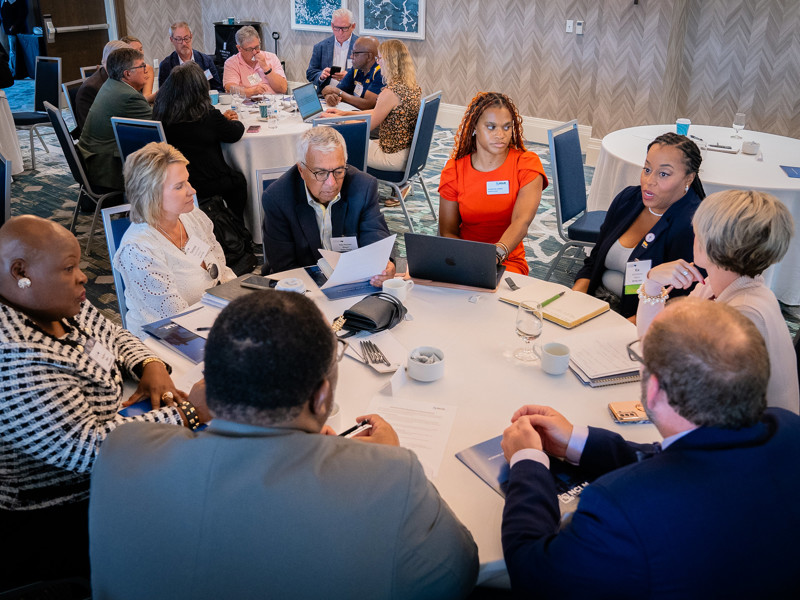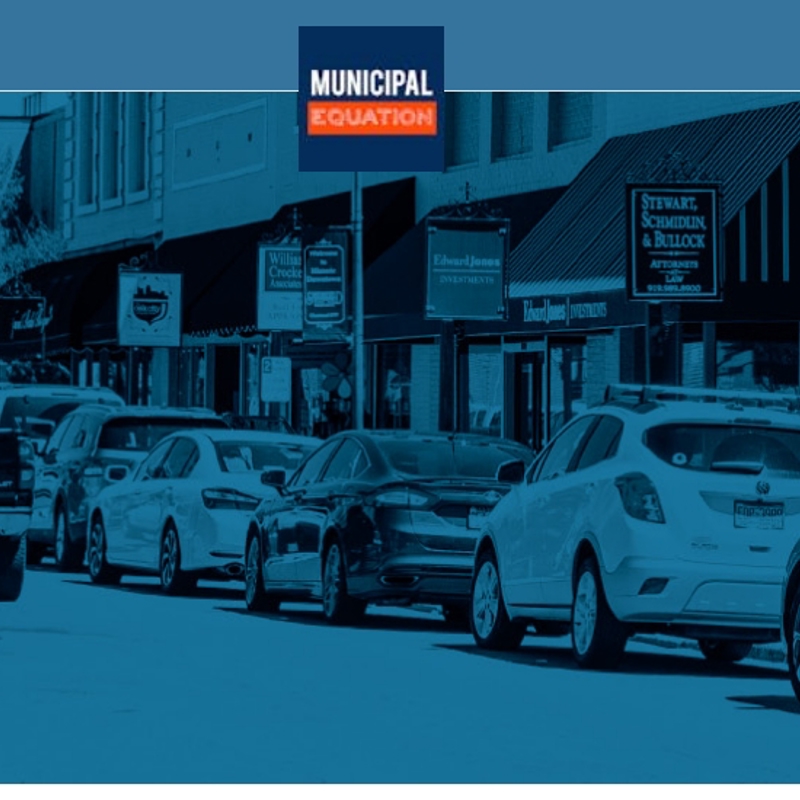Listening Sessions Foster Consensus Legislative Goals
Q4 2024 | Vol. 74, Issue 4
The late TV and radio personality Larry King once remarked, “Nothing I say this day will teach me anything. So, if I am going to learn, I must do it by listening.”
In a broad sense, that is the point of the NC League of Municipalities’ legislative goals listening sessions, held every two years as we kick off the policy goals development process ahead of the next legislative biennium.
Elected municipal officials are on the ground and know their communities. Tapping their knowledge and understanding the challenges faced by their towns and cities is the best way to learn about the collective needs of all cities and towns.
That is what these listening sessions, held across the state in late September and early October, are all about. In all, four regional sessions open to all municipal officials were held, with those events taking place in Asheville, Concord, Rocky Mount and Elon. Sessions, both in person and virtually, were also held for the League’s Board of Directors and affiliate groups the NC Mayors Association, NC Metro Mayors Coalition and NC Black Elected Municipal Officials. A separate virtual session, open to all members, also took place.
The goal of each, with League staff helping to prompt the discussion, was simply … to listen. The next part was allowing that listening to turn into the seed of ideas that could become legislative goals that League members and staff could pursue before the North Carolina General Assembly over the next two years.
At the NC Mayors Association listening session, held as a part of the group’s larger meeting in Wilmington, more than 70 mayors from across the state formed groups of seven or eight around tables to bounce ideas off of one another related to what they are seeing in their individual communities.
Not surprisingly, common themes repeatedly emerged.
At one table, the mayors delved into the importance of regionalization when it comes to the provision of water and sewer service, while noting how those arrangements work best with incentives from the General Assembly, rather than mandates, that ensure ratepayers for the larger municipal utility are not penalized with higher rates.
“We need to be encouraging regionalization while helping smaller towns with funding and technical assistance,” said Broadway Mayor Donald Andrews.
That conversation also included discussions of the need to protect extraterritorial jurisdiction so that towns and cities can cooperatively plan for future growth and do so in ways that allow for water and sewer capacity to best be utilized.
Other topics of interest: Powell Bill funds not keeping pace with street maintenance needs as construction costs escalate, and the need for more audit assistance for smaller towns.
“Powell Bill funds are just not keeping up with costs, and on state projects, the more delays we see, the more the cost goes up,” said Bethel Mayor Carl Wilson.
At a virtual meeting open to all members, similar concerns were expressed about the need for more transportation dollars and the challenges of water and sewer regionalization.
In one of the breakout rooms during that meeting, participants also focused on the increasing costs to treat the “forever chemicals” often referred to as PFAS. “It’s hard to meet those standards,” said Butner Town Manager Jordan McMillen.
That subset of participants also discussed the need to protect local control, with Wake Forest Manager Kip Padgette reflecting on how legislation now appears to be targeting individual municipalities when it comes to who controls growth.
On the issue of housing affordability, Padgette and others noted cities are increasingly providing incentives—either cutting various fees or allowing for density bonuses—to try to encourage affordable housing set-asides. It’s not enough, they agreed, as rising land prices dictate more expensive homes and developers rarely take advantage of the incentives
Multiply these two hour-long discussions among a handful of elected and appointed municipal officials by 25 or 30, and you begin to have an idea of the scope of legislative goals listening sessions.
By the conclusion of these sessions, more than 250 municipal officials representing more than 160 cities and towns had taken part in the collection of these ideas.
Once all the proposed policies and ideas are documented by League staff, it becomes the League’s 65-member Policy Committees task to distill those ideas into concise goal language and prioritize them. Those meetings were set to begin in October (following the deadline for submissions to this issue of Southern City).
After the committee whittles the goals down to around 15 or so priorities, the League’s Board of Directors will examine them to further refine and make any changes. The full slate will then be put to the League’s full members for a vote.
While there is no set requirement for the final number of legislative goals, they are likely to be pared down to 10 to 12.
That number allows the League to present a list of focused needs to legislators, and one that it may reasonably seek to achieve.
This comprehensive process, now frontloaded so that member-city officials have multiple opportunities to discuss their thoughts early on, invites the involvement of cities and towns from across the state. That involvement, from municipalities big and small, from the mountains to the coast, ensures that legislators know that the eventual list of priorities is comprehensive and represents the thoughts and concerns in their districts. In turn, these legislative goals have a better chance of being enacted into law.












